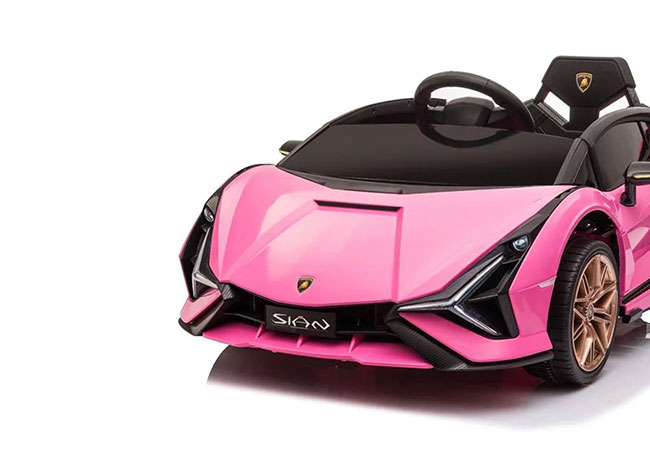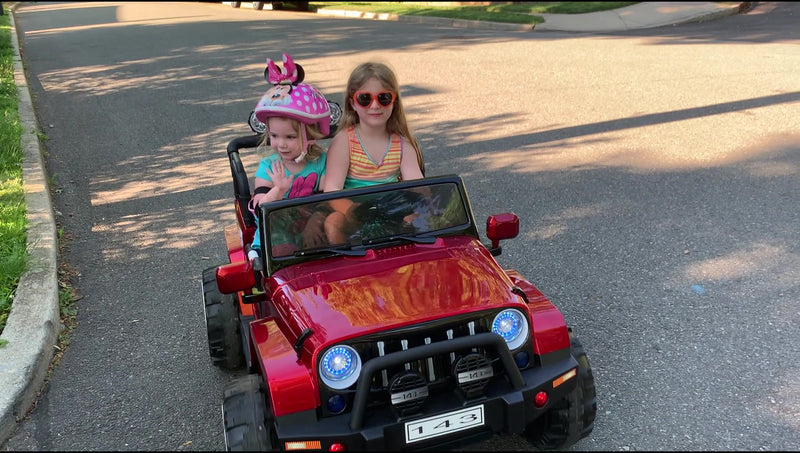Great Reasons To Selecting Remote Control Childrens Cars
Great Reasons To Selecting Remote Control Childrens Cars
Blog Article
What Ride-On Car Safety Features Should I Consider? Cons And Pros
Safety features are essential to consider when choosing the best ride-on car for your child. This will ensure that they are safe during their time of play. Here are some crucial security features to take into consideration as well as their pros and cons - Seat Belts -
Pros They are an excellent option to ensure your child is safe in their ride-on car. They decrease the likelihood of your child falling out of the play area or getting removed from the car. They offer an extra layer of protection, particularly during turns or sudden stops.
Pros - Some ride-on vehicles do not include seat belts, especially ones designed for toddlers. Seat belts may be uncomfortable to youngsters and make them not wear them.
Sturdy Construction
Pros: A durable ride-on vehicle with high-quality materials will last longer and be less likely to break. This guarantees the safety and security of your children. It can stand up to the demands of playtime and provide stability when used.
Cons - Sturdy design usually comes at a higher price that makes it less affordable for some families. The ride-on cars may also be less mobile and maneuverable when they're made of heavy materials.
Low Center of Gravity
Pros: Ride-on vehicles that have a lower centre of gravity have a lesser tendency to tip over. This lowers the likelihood of injury or accident. They are more stable and provide better stability, especially when turning or performing maneuvers.
Cons - Some ride-on cars that have a lower center of gravity compromise the ability to drive off-road and ground clearance, which can limit their capabilities.
Remote control for parents'
Pros- Ride-on cars which are controlled remotely allow parents to watch and guide their children as playing. This provides an additional layer of security and protection. Parents can help prevent collisions, aid in an emergency situation, or navigate difficult terrain.
Cons - Remote control for parents can limit children’s autonomy and independence, as they heavily rely on supervision and guidance from parents while playing. Also, remote-controlled vehicles may be more expensive than manual ones.
Speed Limiters
Pros-Ride-ons that come with speed limiters and adjustable speed settings let parents decide on the maximum speed for their car. This can reduce the possibility of a crash or collision. They may increase the speed slowly as a child grows confident and acquires the abilities.
Cons - Children could quickly grow out of their lower speeds. This can cause frustration or even dissatisfaction. Speed limiters aren't always available on every model or they may require extra features or additional accessories.
Safe Start Technology -
Pros - Safe start technology ensures that the ride-on automobile is able to stop and start up quickly, reducing the chance of sudden lurches or jerks which could cause panic or even harm the child. It offers the safety and comfort of riding experience.
Pros - Cars with ride-on features such as safe start features could be more costly than standard models that do not have this feature. Furthermore, some kids may discover that a gradual acceleration and deceleration are not as fun or exciting than instant starts and stops.
Enhances Visibility -
Pros: Ride-on vehicles that have improved visibility, such as taillights and headlights that use or reflective materials may increase visibility even in dimly lit or low-light conditions. They improve safety as they make the vehicle more noticeable to pedestrians and cars.
Cons - The enhancements to visibility could drain batteries faster or make it more difficult to design the ride-on cars, thereby increasing the likelihood of malfunctions as well as maintenance problems.
If you weigh the pros and con of each safety feature you can select a ride-on vehicle that is both safe and gives a fantastic play experience for your child. Follow the recommended McLaren kids car for website examples including ride a toy, electric ride along car, childs car toy, childrens digger, lambo toy car, ride on digger, two seater childrens electric cars, toy with car, two seater childrens electric cars, kiddies cars and more. . 
How Do You Maintain And Assemble A Kid's Ride-On Vehicle?
To ensure the safety of your children and their durability To ensure safety and durability, the majority of ride-on cars for kids require assembly. Here are some typical assembly and maintenance needs for ride-ons for kids:
The majority of ride-on cars arrive a partially assembled state and need to be assembled upon arrival. This usually involves attaching parts such as the seats and steering wheel in accordance with the manufacturer's specifications.
Follow the assembly directions carefully to ensure all components are correctly aligned and securely attached. Utilize the tools and hardware as directed for completing the assembly process.
Cleaning -
Regular cleaning is necessary to ensure that the car you ride on is running at its peak and performing efficiently. Use a soft sponge or cloth dampened with mild soap and water to clean the exterior surfaces.
Pay particular attention to places that are prone to accumulation, such as the tires, wheels, and undercarriage. To clean stubborn dirt and grime make use of a toothbrush or a brush to get into places that are difficult to reach.
The use of harsh chemical cleaners, abrasive chemicals or high-pressure water sprays could damage electronic or paint components of the ride-on vehicles.
Battery Care
To ensure performance and prolong the life of your ride-on battery, it is vital that you take proper treatment of your battery. Follow these tips for caring for your battery to help you maintain your battery's health.
Make sure to fully charge your battery prior to the first use, and then every time you make use of it, to ensure the longest running time.
Avoid overcharging or leaving the battery connected to the charger for prolonged durations, since this could harm the battery and shorten its lifespan.
The ride-on car should be stored along with the battery in a cool, dry area when not being used, away from the sun's rays or extreme temperatures.
Check the battery terminals periodically for damage or corrosion. Clean them if needed using an electric wirebrush or terminal cleaner.
Replace the battery if it doesn't hold a charge anymore or shows evidence of being damaged or degraded.
Tire Maintenance -
Regularly inspect the tires to check for signs such as wear, damage or the loss of pressure. Inflate the tires according to the recommended pressure by using a bicycle pump or air compressor as needed.
Check the tread pattern and see whether there are any foreign objects or particles that could cause flats or punctures. Replace damaged tires and remove any obstructions.
Lubricate the wheel bearings and other components to ensure a smooth rotation.
Periodic repairs and replacements
Despite routine maintenance, cars that ride on could require repairs on occasion or part replacements because of wear and wear or damage caused by accident.
Be on the lookout for signs of malfunction or deterioration, such as unusual noises, loss of power, or erratic behavior. Consult the manufacturer's instructions or contact customer support for guidance on troubleshooting and repair solutions.
Replace damaged and worn-out components to protect yourself from further harm, and ensure that the ride-on vehicles are functional and safe.
These maintenance and assembly instructions will help you keep your child's ride on car in top condition and allow them to have a safe and fun playtime. Check out the top go here on remote control childrens cars for site advice including riding digger, electric rideons, childs electric ride on car, ride a toy, car on ride, remote control childrens electric cars, electric ride on cars, toy car for car, ride electric car, electric two seater cars and more. . 
What Is The Best Way To Choose A Budget For The Purchase Of A Car Ride For Your Child?
To establish a realistic budget for your kid's ride-on vehicle, it's crucial to take into consideration a variety of factors. These include characteristics, durability, and financial circumstances. How do you establish a budget for your ride-on car and make the most of your investment Find the average price
For a start, you must research the cost of a child's ride-on vehicle with the features that you want. Find pricing information for different models by visiting online retailers, toy shops, and manufacturer's websites.
Find out the features you need -
Select the features your child needs to ensure their safety and enjoy. Features such as working headlights or realistic sound effects could affect the cost of the item.
Prioritize your features based on your child's preferences and your budget restrictions.
Consider Durability & Longevity
Look for sturdy ride-ons that are made of high-quality materials such as plastics or metals, which can withstand repeated use and extreme outdoor conditions.
To find out the longevity and durability of various models, read reviews and ask parents for suggestions. A greater upfront investment in a quality ride-on vehicle could result in savings over the long term because it will not require frequent repairs or replacements.
Comparing the Costs of different retailers
Check prices from various retailers to determine the most price for your money. Visit online retailers as well as local department and toy stores for deals and competitive pricing.
Keep an eye out for sales, discounts or clearance sales that will help you save money while not losing quality.
Calculate additional costs
It is also important to think about any other expenses that could be associated with buying a ride-on vehicle for your child. They could be the cost of shipping, taxes, or even accessories like spare batteries or safety equipment.
Make sure to budget your money accordingly to ensure you can cover the total price of the ownership including any accessories that are required or maintenance expenses.
Create a budget that is Realistic
Set up a realistic budget in accordance with your budget and research needs. This will allow you to align your priorities with your needs. Consider the features, durability and long-term use when determining your maximum budget for a ride-on car.
Don't spend too much on your child's toys or other items that aren't needed.
Take into consideration the long-term value -
Consider the long-term worth of the ride-on kid's car by looking at its longevity as well as its versatility and capacity to grow alongside your child. It might be worthwhile to invest in a higher-end model with more features in the long run.
Set a realistic budget to purchase a ride on car for children and compare prices, features and durability. Make sure you select features that are crucial to your child’s safety and satisfaction while making sure you are mindful of your budget. View the recommended kids ride on cars kidscars.co.uk news for website recommendations including riding digger, ride on toy, car toy car toy, race car toy car, toy cars, a toy car, childrens electric ride on, ride a toy, electric ride on cars, riding digger and more. .